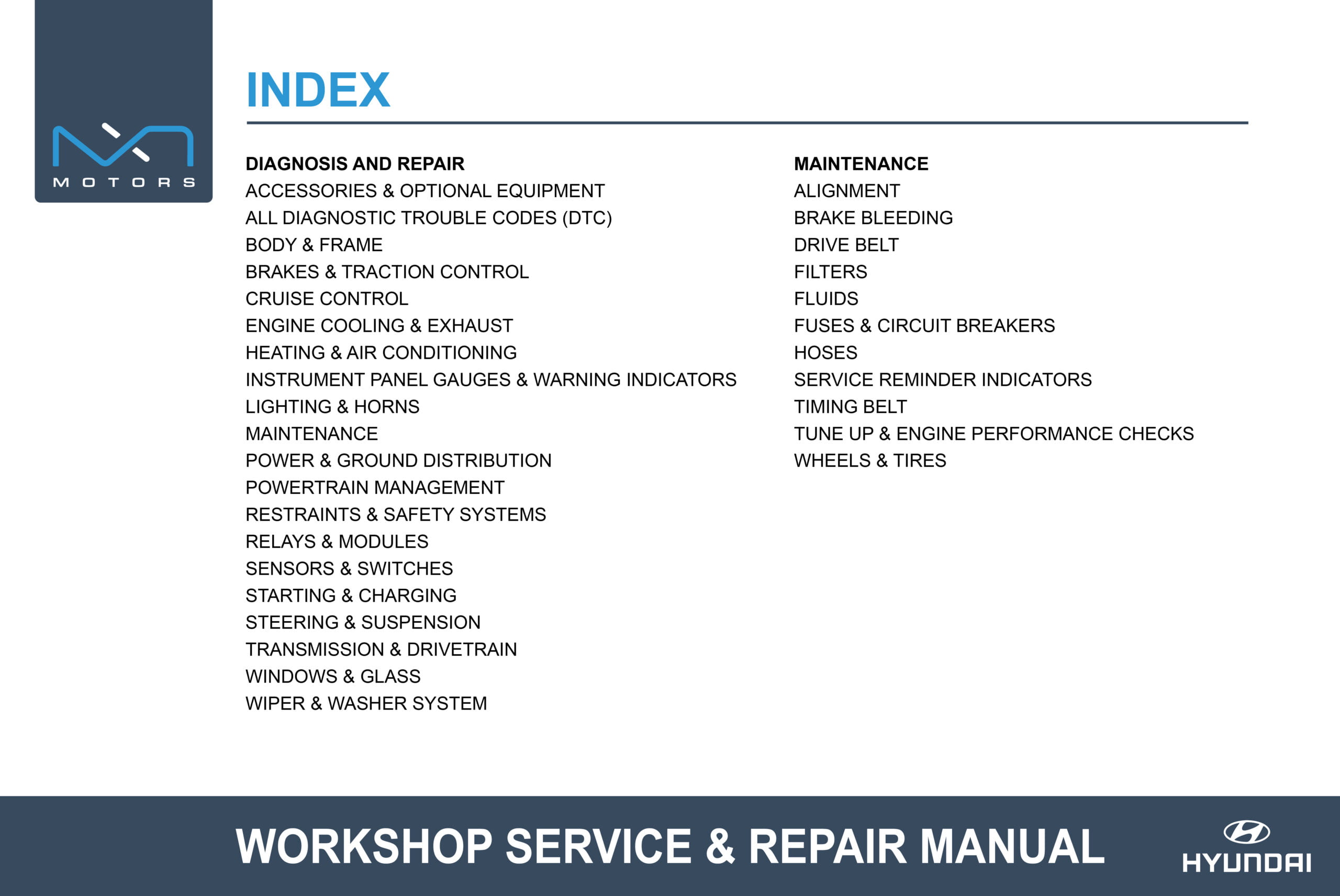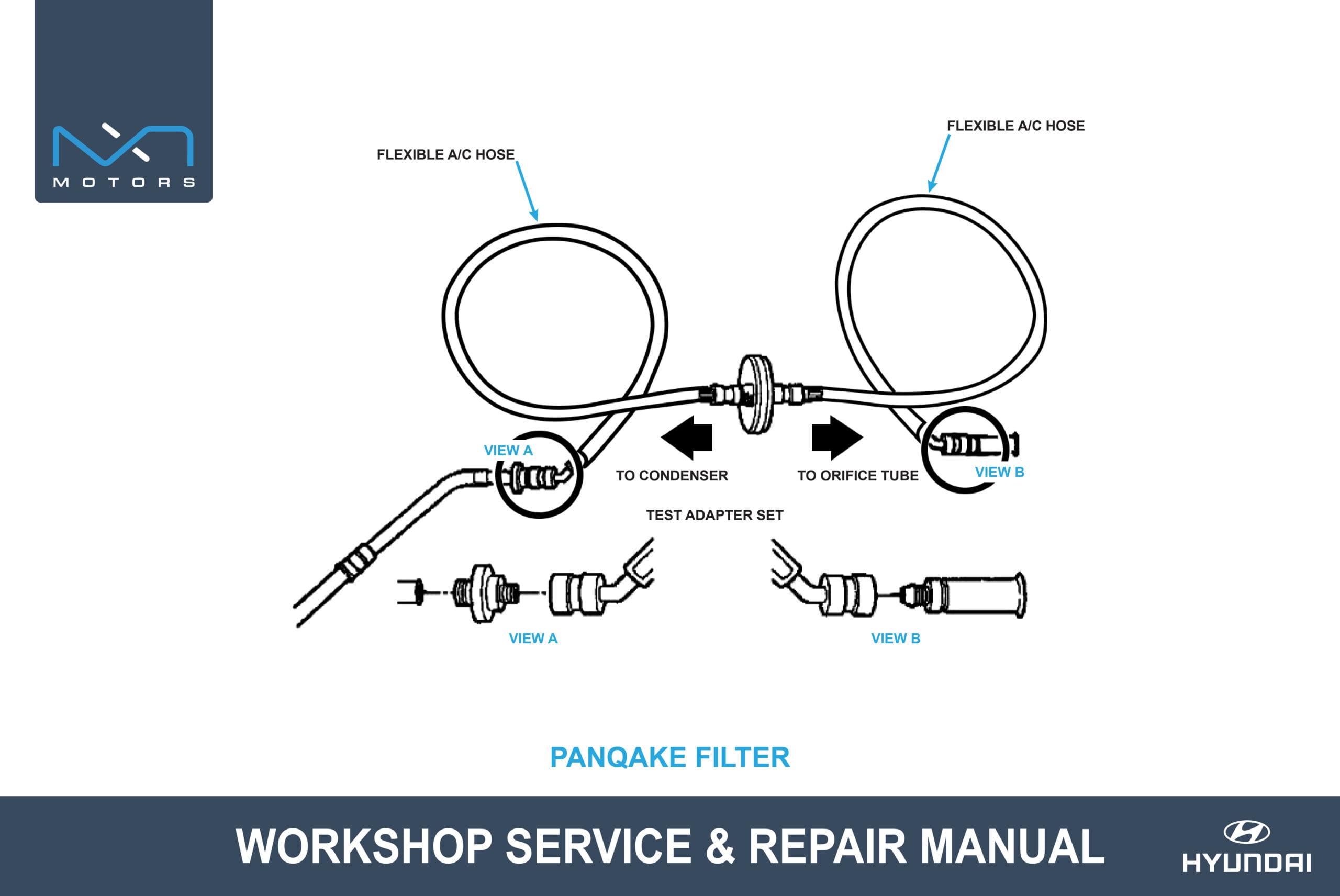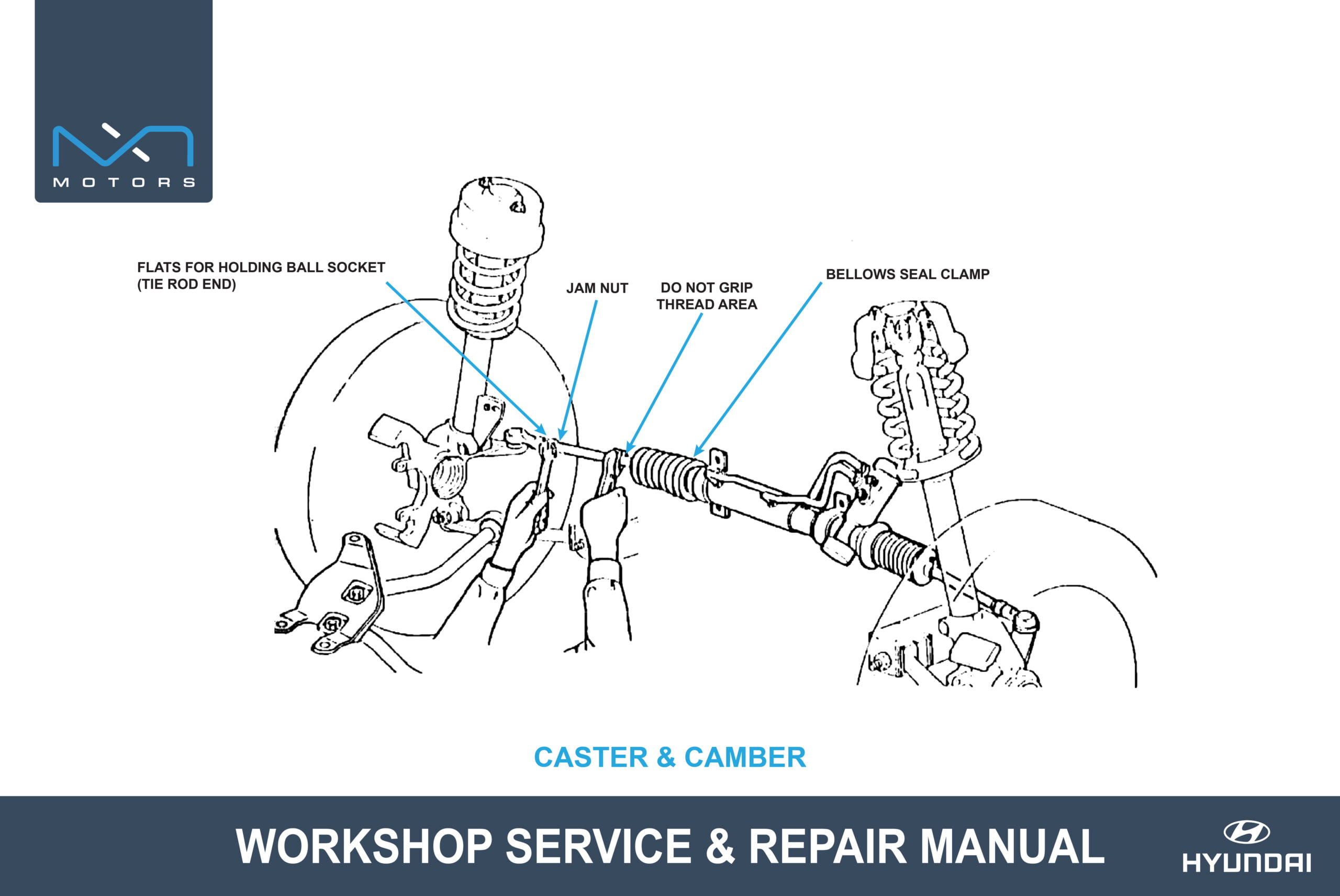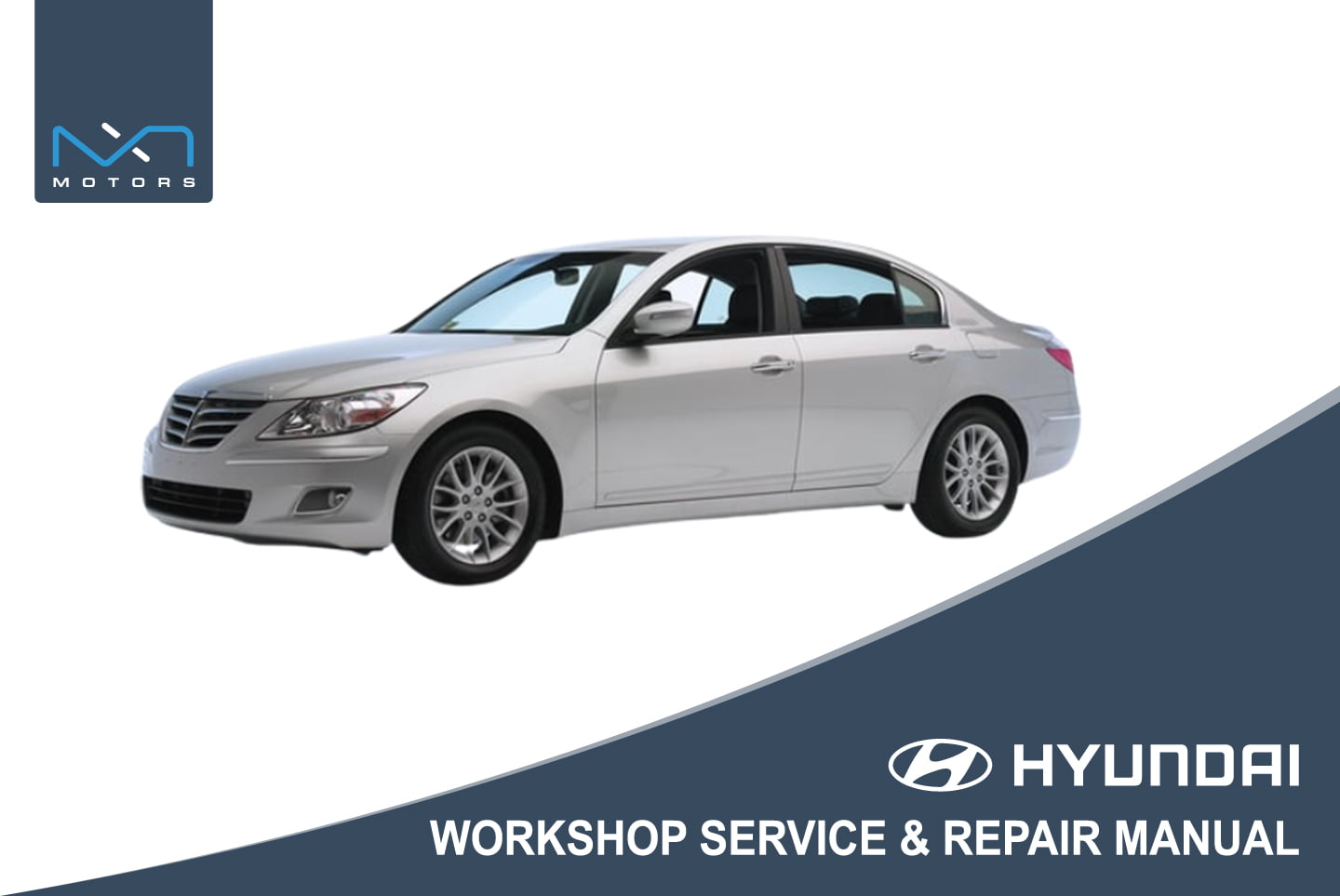2013 Hyundai Sonata 2.0T SE – Workshop Service & Repair Manual
| MANUFACTURER | Hyundai (North America) |
| YEAR | 2013 |
| MODEL | Sonata 6th generation (YF-series) |
| ENGINE | 1998 CC |
| DRIVE | FWD |
| FUEL TYPE | Gasoline (Petrol) |
| TRANSMISSION | Automatic |
2013 Hyundai Sonata 2.0T SE Workshop Service & Repair Manual (PDF)
Get the ultimate guide to maintaining and optimizing your 2013 Hyundai Sonata 2.0T SE with our expertly crafted Workshop Service & Repair Manual. Designed for both DIY enthusiasts and professional mechanics, this manual offers step-by-step instructions, detailed diagrams, and expert insights to keep your vehicle in top condition.
Key Features
- Complete Coverage: Our manual covers every aspect of the 2013 Hyundai Sonata 2.0T SE, including engine diagnostics, electrical systems, transmission repairs, fuel injection, and braking systems. Each section is meticulously designed to provide you with the knowledge and confidence to tackle any repair or maintenance task.
- Detailed Diagrams: Featuring easy-to-follow diagrams and illustrations, our manual simplifies complex repairs, making them accessible to all skill levels. Visual learners will appreciate the clear schematics that break down intricate processes.
- Troubleshooting Guides: Quickly diagnose common issues with our comprehensive troubleshooting guide, saving you time and effort by pinpointing problems and offering practical solutions.
Performance and Durability
The 2013 Hyundai Sonata 2.0T SE is celebrated for its powerful turbocharged engine and sleek design. Our manual emphasizes maintaining these key attributes by offering guidance on:
- Engine Performance: Ensure optimal engine performance with detailed maintenance routines, including oil changes, turbocharger inspections, spark plug replacements, and timing belt checks. Enhance fuel efficiency and prolong engine life with expert advice.
- Transmission and Drivetrain: Learn how to maintain your vehicle's transmission and drivetrain for smooth and responsive driving. Our manual provides instructions on inspecting and servicing transmission fluid, gear shifts, and differential components.
Routine Care and Upkeep
Keep your 2013 Hyundai Sonata 2.0T SE running smoothly with regular maintenance routines outlined in our manual:
- Brake Maintenance: Discover how to inspect, replace, and maintain brake pads, rotors, and fluid levels to ensure safety and reliability on the road.
- Fluid Checks and Changes: Regularly check and replace essential fluids, including coolant, transmission fluid, and brake fluid, to prevent potential issues and prolong your vehicle's lifespan.
- Electrical Systems: Understand the intricacies of your vehicle's electrical systems, including battery care, wiring inspections, and troubleshooting electrical faults. Our manual provides insights into maintaining optimal electrical performance.
Printable and Accessible
Our Workshop Service & Repair Manual is available in a convenient PDF format, allowing you to access it on any device, whether you're in the garage or on the go. Print individual sections or the entire manual as needed, ensuring you always have the information you need at your fingertips.
How Can I Prevent Engine Seizure in My 2013 Hyundai Sonata 2.0T SE?
- Check Oil Levels Regularly: Ensure your engine always has sufficient oil by checking the oil levels every few weeks and before long trips.
- Change Oil and Filters: Follow the recommended schedule for oil and filter changes as specified in your vehicle's manual. Use the correct grade of oil for your engine.
- Monitor Coolant Levels: Keep an eye on coolant levels and top up as necessary to prevent overheating.
- Inspect for Leaks: Regularly check for oil and coolant leaks and address any issues immediately.
- Pay Attention to Warning Lights: Do not ignore warning lights on your dashboard. Address any engine-related warnings promptly.
For detailed instructions and preventative maintenance tips, refer to our 2013 Hyundai Sonata 2.0T SE Workshop Service & Repair Manual.
How Do I Address High Oil Consumption in My 2013 Hyundai Sonata 2.0T SE?
- Check for Leaks: Inspect the engine for any oil leaks and fix them. Common leak points include the valve cover gasket and oil pan.
- Inspect PCV Valve: A faulty Positive Crankcase Ventilation (PCV) valve can cause excessive oil consumption. Replace it if necessary.
- Use the Correct Oil: Ensure you are using the recommended oil viscosity and quality for your vehicle.
- Monitor Oil Levels: Keep track of how much oil your engine is consuming over time and top up as needed.
- Conduct a Compression Test: If the above steps do not solve the issue, perform a compression test to check for internal engine problems such as worn piston rings.
Find detailed procedures and diagnostic tips in our 2013 Hyundai Sonata 2.0T SE Workshop Service & Repair Manual.
What Should I Do If My 2013 Hyundai Sonata 2.0T SE Has Turbocharger Failure?
- Diagnose Symptoms: Look for signs such as power loss, excessive smoke, and unusual noises from the turbocharger.
- Inspect Air Intake System: Check for any blockages or damage in the air intake system that could affect the turbocharger.
- Check Oil Supply: Ensure the turbocharger is receiving adequate lubrication. Inspect oil lines for blockages or leaks.
- Replace Faulty Components: If the turbocharger is damaged, replace it along with any related components that might be affected.
- Regular Maintenance: Follow a regular maintenance schedule to keep the turbocharger in good condition, including oil changes and filter replacements.
Our manual provides step-by-step guidance on diagnosing and repairing turbocharger issues in the 2013 Hyundai Sonata 2.0T SE.
How Can I Fix Transmission Issues in My 2013 Hyundai Sonata 2.0T SE?
- Check Transmission Fluid: Ensure the transmission fluid is at the correct level and is clean. Replace it if it’s dirty or burnt.
- Inspect for Leaks: Look for any transmission fluid leaks and repair them.
- Reset Transmission: Sometimes resetting the transmission control module can solve shifting issues. Consult the manual for specific reset procedures.
- Replace Solenoids: Faulty solenoids can cause shifting problems. Replace any malfunctioning solenoids.
- Professional Diagnosis: If problems persist, consider getting a professional diagnostic to check for internal transmission issues.
For comprehensive repair instructions and diagnostic tips, refer to our 2013 Hyundai Sonata 2.0T SE Workshop Service & Repair Manual.
How Do I Deal with Steering Coupler Failure in My 2013 Hyundai Sonata 2.0T SE?
- Diagnose the Problem: Identify symptoms such as clunking noises, loose steering, or unusual vibrations.
- Access the Coupler: Remove the necessary panels to access the steering coupler. This may involve removing the steering column covers.
- Inspect the Coupler: Check for wear and tear or damage to the coupler.
- Replace the Coupler: If the coupler is damaged, replace it with a new one. Follow the manual for specific replacement procedures.
- Reassemble and Test: Reassemble the steering components and test the steering to ensure the problem is resolved.
Our manual provides detailed steps and diagrams to help you replace the steering coupler in your 2013 Hyundai Sonata 2.0T SE.
Maintaining your 2013 Hyundai Sonata 2.0T SE is essential for its longevity and performance. Addressing common issues like engine seizure, high oil consumption, turbocharger failure, transmission problems, and steering coupler failure can significantly enhance your vehicle’s reliability. Our Workshop Service & Repair Manual offers in-depth instructions, troubleshooting tips, and maintenance guidelines to help you keep your Sonata in top condition. Visit our website today to download your copy and empower yourself with the knowledge to handle any repair or maintenance task with confidence.
You must be logged in to post a review.
Original price was: $99.99.$14.99Current price is: $14.99.
2013 Hyundai Sonata 2.0T SE – Workshop Service & Repair Manual
Original price was: $99.99.$14.99Current price is: $14.99.
| MANUFACTURER | Hyundai (North America) |
| YEAR | 2013 |
| MODEL | Sonata 6th generation (YF-series) |
| ENGINE | 1998 CC |
| DRIVE | FWD |
| FUEL TYPE | Gasoline (Petrol) |
| TRANSMISSION | Automatic |







Reviews
There are no reviews yet.